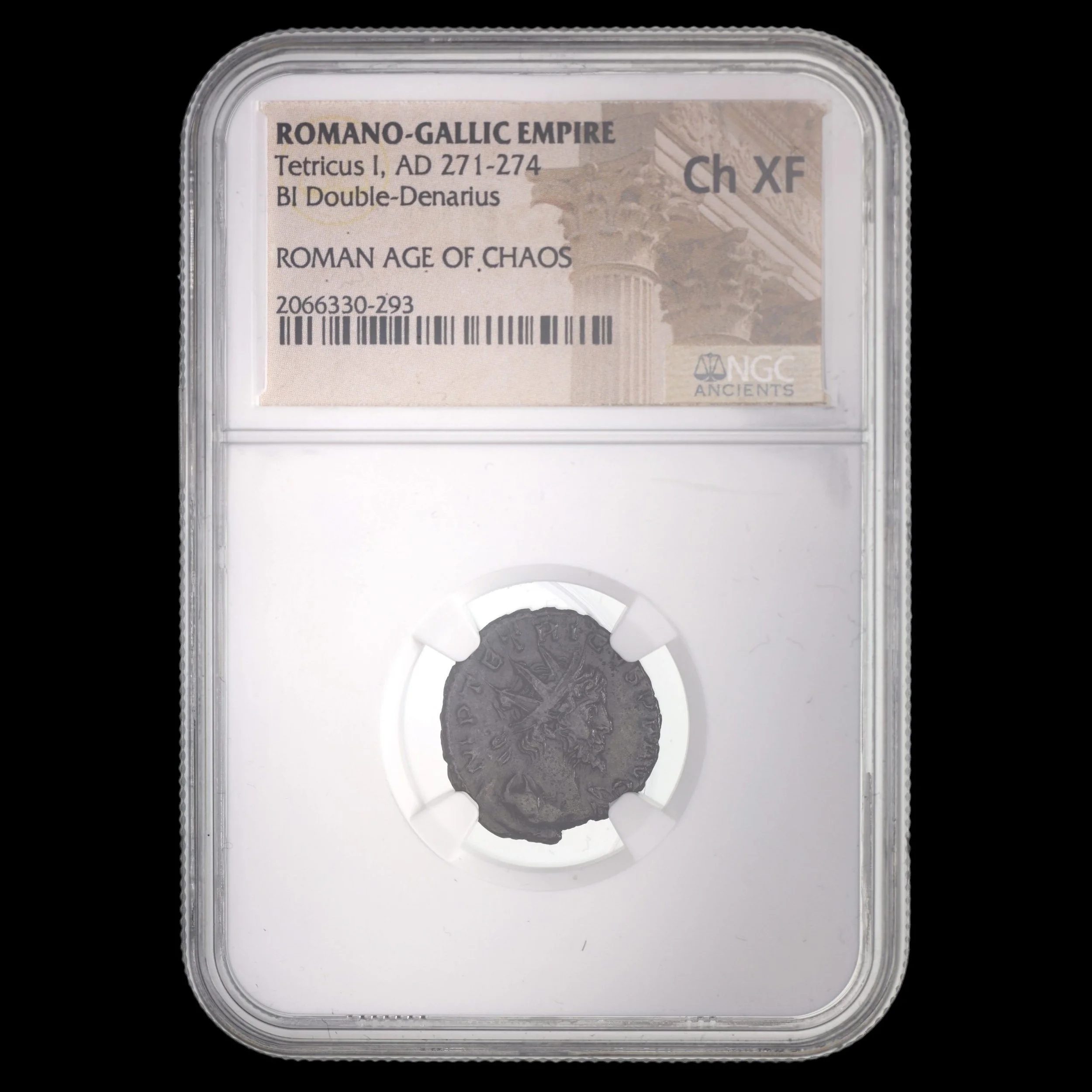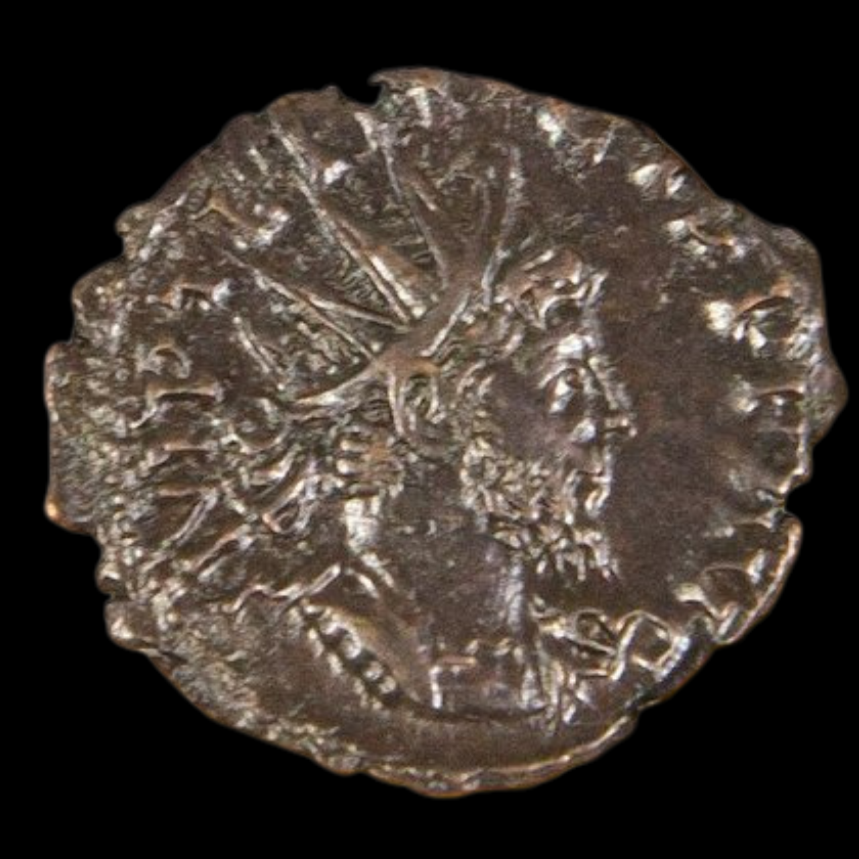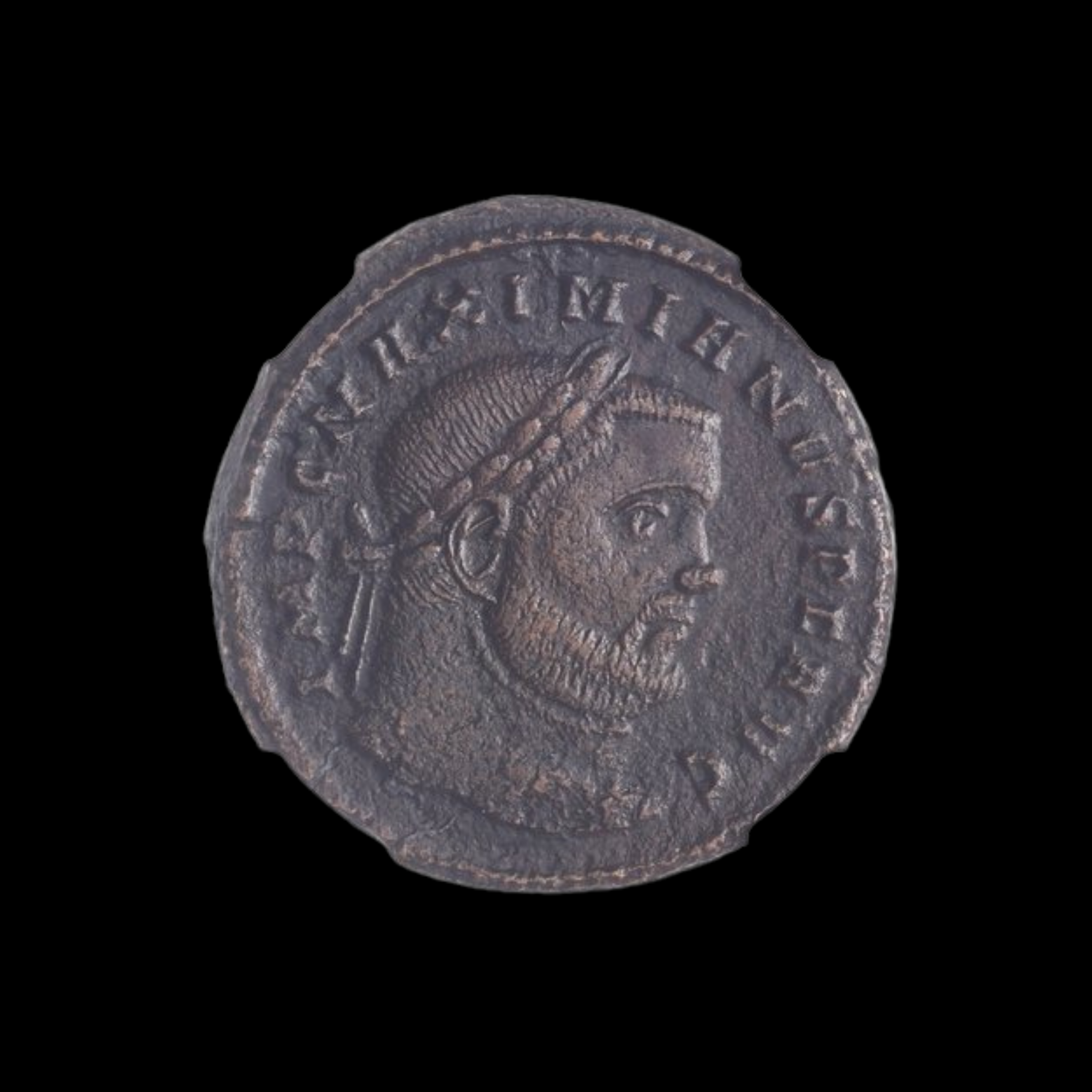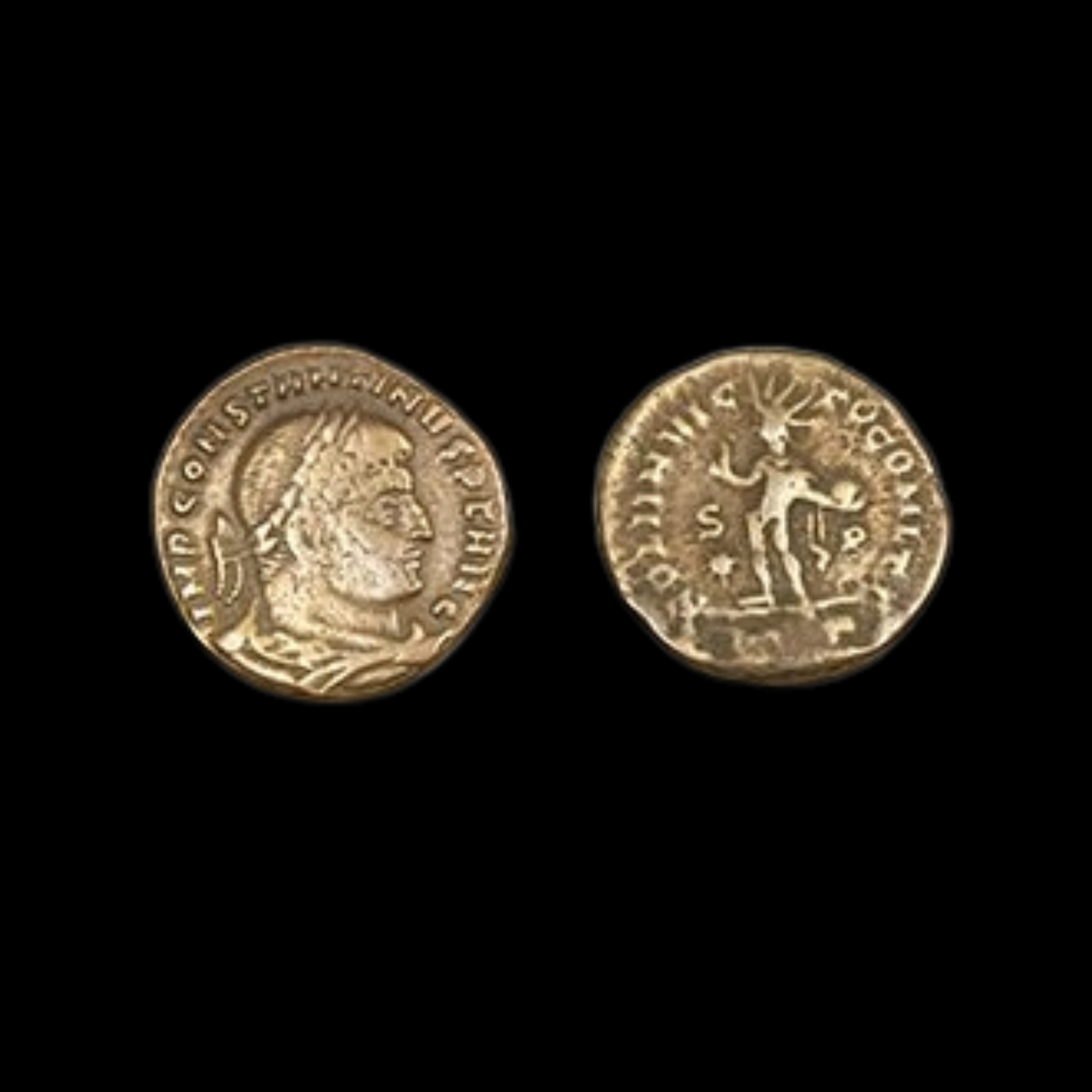 Image 1 of 7
Image 1 of 7

 Image 2 of 7
Image 2 of 7

 Image 3 of 7
Image 3 of 7

 Image 4 of 7
Image 4 of 7

 Image 5 of 7
Image 5 of 7

 Image 6 of 7
Image 6 of 7

 Image 7 of 7
Image 7 of 7








Roman Bronze Coin of Tetricus I (about 1,751-1,754 years ago)
The coins shown are representative examples of the grade and type, but not the actual specimens for sale. For details on NGC’s grading standards and definitions, please refer to our NGC Grading page.
This bronze coin was issued by Emperor Tetricus I, the last ruler of the breakaway Gallic Empire that controlled parts of western Europe during the Crisis of the Third Century. Minted between 271 and 274 CE, this coin represents the final chapter of Rome's fractured western territories before reunification under central imperial authority.
Coin Description:
Front side: Portrait of Emperor Tetricus I facing right, likely wearing a radiate crown, with his name and titles in Latin around the edge.
Back side: Probably features personifications of virtues, deities such as Pax (Peace) or Laetitia (Joy), or other standard Roman imagery of the period.
Technical Details:
Bronze alloy composition (possibly with minimal silver content)
Denomination: Likely an Antoninianus
Weight: Approximately 2-4 grams
Diameter: Approximately 18-22 mm
NGC Certified for authentication and preservation
Minted between 271-274 CE
Condition as specified by NGC certification
Historical Significance: Tetricus I's brief reign illustrates the volatile politics of the fractured Roman world in the 3rd century. Following the assassination of Emperor Postumus in 269 CE and the subsequent murder of his successor Victorinus, the wealthy Julia Victoria (Victorinus's mother) used her fortune to help install General Tetricus I as ruler of the Gallic Empire. When central Roman authority strengthened under Emperor Aurelian, the Gallic Empire began to collapse as generals defected. Facing inevitable defeat, Tetricus surrendered to Aurelian in 274 CE. In an unusual show of clemency, after being paraded through Rome in Aurelian's triumph, Tetricus was spared execution and later served as a governor in southern Italy. This coin represents the culmination of Rome's struggle to reunify its fractured empire during the Crisis of the Third Century.
The coins shown are representative examples of the grade and type, but not the actual specimens for sale. For details on NGC’s grading standards and definitions, please refer to our NGC Grading page.
This bronze coin was issued by Emperor Tetricus I, the last ruler of the breakaway Gallic Empire that controlled parts of western Europe during the Crisis of the Third Century. Minted between 271 and 274 CE, this coin represents the final chapter of Rome's fractured western territories before reunification under central imperial authority.
Coin Description:
Front side: Portrait of Emperor Tetricus I facing right, likely wearing a radiate crown, with his name and titles in Latin around the edge.
Back side: Probably features personifications of virtues, deities such as Pax (Peace) or Laetitia (Joy), or other standard Roman imagery of the period.
Technical Details:
Bronze alloy composition (possibly with minimal silver content)
Denomination: Likely an Antoninianus
Weight: Approximately 2-4 grams
Diameter: Approximately 18-22 mm
NGC Certified for authentication and preservation
Minted between 271-274 CE
Condition as specified by NGC certification
Historical Significance: Tetricus I's brief reign illustrates the volatile politics of the fractured Roman world in the 3rd century. Following the assassination of Emperor Postumus in 269 CE and the subsequent murder of his successor Victorinus, the wealthy Julia Victoria (Victorinus's mother) used her fortune to help install General Tetricus I as ruler of the Gallic Empire. When central Roman authority strengthened under Emperor Aurelian, the Gallic Empire began to collapse as generals defected. Facing inevitable defeat, Tetricus surrendered to Aurelian in 274 CE. In an unusual show of clemency, after being paraded through Rome in Aurelian's triumph, Tetricus was spared execution and later served as a governor in southern Italy. This coin represents the culmination of Rome's struggle to reunify its fractured empire during the Crisis of the Third Century.































